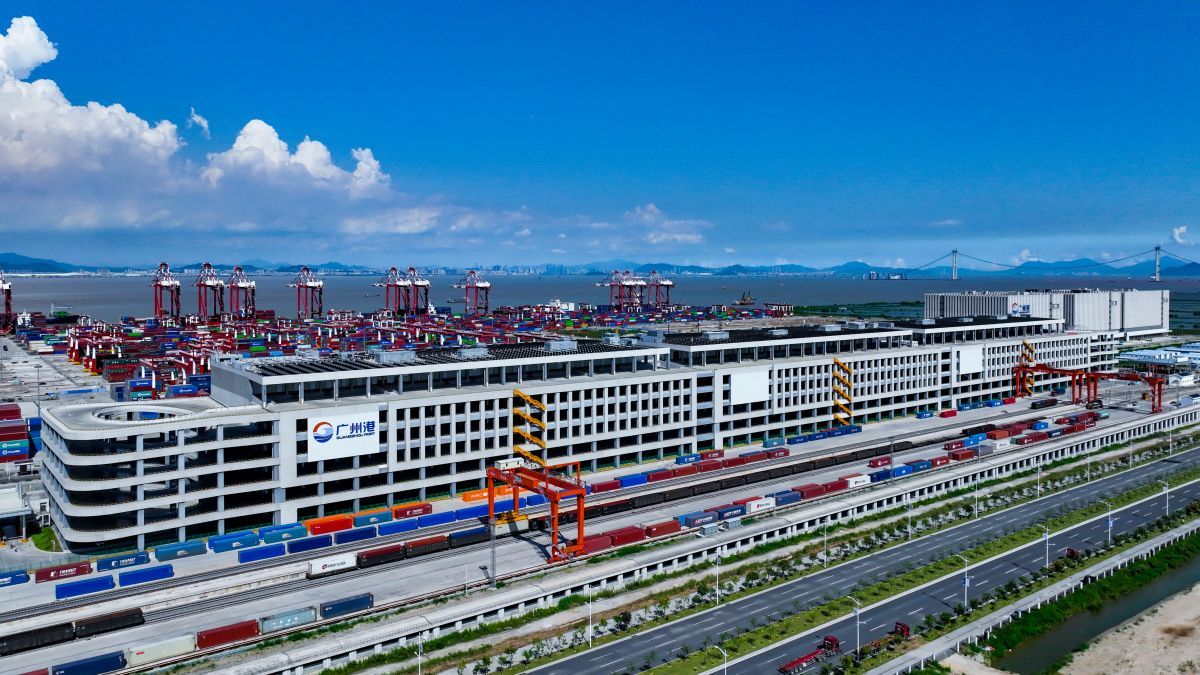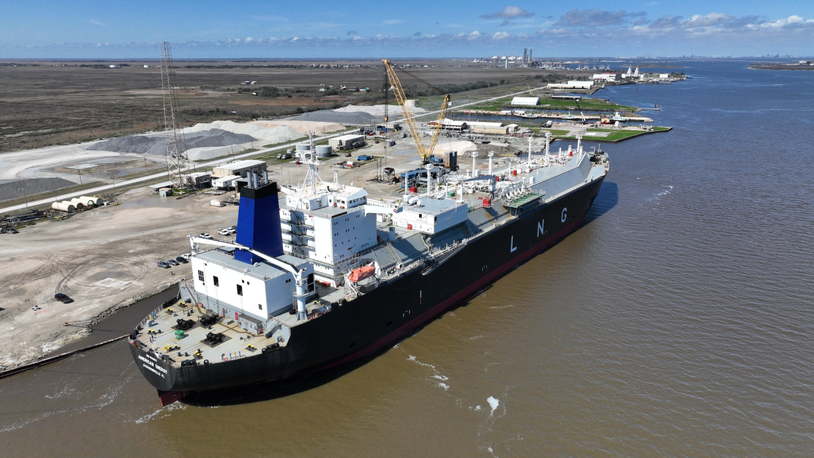Business Sectors
Events
Contents
Register to read more articles.
China’s container volumes surged in 2024
Continued demand for Chinese goods – but Chinese economy set to slow
China’s top eight container ports saw their collective volumes surge by 7% to hit an estimated 224M TEU for the full year 2024 compared with 2023.
And for January–October 2024, the eight ports collectively saw their volumes swell by 9% to 186M TEU.
Infrata (a DSS+ company) technical director Dean Davison says, “The estimated, full-year port volumes in China for 2024 will see continued growth across almost all the major facilities, with increases ranging between 5%-15% likely. This is an endorsement that for 2024, the continued demand for Chinese goods, as the manufacturing engine for the world, firmly remains in place.”
He adds, “The 2024 port activity does not include any potential impact from the trade policies of the US, so this impact can only be assessed as 2025 progresses.”
And China’s number one container port Shanghai has surpassed 50M TEU for the first time, making it the world’s first port to cross this milestone mark for annual container throughput.
Mr Davison comments on its significance, “For 2025, the consensus among financial institutions is the Chinese economy will grow by around 5%, so it is going to slow. Yet if a port the size of Shanghai sees growth of ’only’ 5%, this is still 5% on over 50M TEU, which is a significant number of extra containers.”
Party secretary of Shanghai, Chen Jining, was quoted by a China daily newspaper as saying, “We will further solidify strategic connections, deepen work collaboration, jointly shoulder important missions and seize development opportunities to build a shipping nexus with global reach and create a new paradigm in the construction of the Shanghai International Shipping Center.”
In 2024, Shanghai Port’s international transhipment volume grew by more than 20% year-on-year, with annual transhipment expected to exceed 7M TEU.
The Shanghai International Shipping Center has ranked in the top three of the global shipping centres for five consecutive years. Currently, Shanghai Port operates nearly 350 international shipping services, connecting over 700 ports in more than 200 countries and regions, with the port connectivity ranking first globally for 13 consecutive years. Furthermore, Yangshan Port has topped the Global Container Port Performance Index for two consecutive years.
Shanghai International Port Group (SIPG) has deepened regional co-operation, partnering with 22 ports along the Yangtze River, including 16 ports in the Yangtze River Delta, strengthening synergies of port and shipping logistics between the home port and its hinterland.
SIPG says it will continue to strengthen co-operation across the port and shipping industry chain, accelerate the enhancement of high-end shipping services, and optimise the allocation of global shipping resources. It will also build a clean energy bunkering hub at Shanghai Port, promoting the clustering of functions and the expansion of capacity at the Shanghai International Shipping Centre.
The second-busiest port, Port of Ningbo-Zhousha, handled an estimated 39M TEU for 2024, positing a year-on-year increase of almost 12%.
At number three is Port of Shenzhen, which maintains its place for the third consecutive year. It saw its throughput jump to an estimated 33M TEU for 2025. The port has homed in on efforts to boost its decarbonisation efforts. It has signed an MoU with partners including Port of Long Beach, to work together to decarbonise ocean trade.
The Port of Guangzhou ranked as the fifth-busiest port in China. Earlier this year, Piraeus Port entered a partnership with the Port of Guangzhou that aims to establish a collaboration that anticipates present and future challenges. Guangzhou’s main container port Nansha is growing rapidly, with a trio of new developments strengthening its position. A new container terminal, ondock rail and a huge warehouse development are all key to Nansha’s expansion. Terminal 4, which has a capacity for 5M TEU, was opened in 2022.
Guangzhou Port (Europe) chief executive Johan Nanninga emphasises the importance of it being fully automated in a previous interview with Container Shipping & Port Technology.
“We needed to get on the learning curve of automated terminals as they will be the future for ports. Because while connectivity and capacity are very important, you might not find the people to operate these ports, so there is a need to be become less labour intensive.”
In March 2022, the port opened its ondock rail. In its first nine months, the rail shifted 200,000 TEU, and in 2023, surpassed 300,000 TEU.
“Connectivity to the hinterlands is becoming more and more important, both on the consumer side and on the production side. There has been a shift from the coastal areas to the inland areas, and we are accessing these areas by weekly train connections,” Mr Nanninga says.
Indeed, Nansha now has the first rail station at a rail terminal in south China.
The third piece of the puzzle is developing Nansha’s temperature-controlled warehouse – the largest in China – and large reefer yard. This is integral to Nansha’s plans to develop its reefer business.
Elsewhere, Beibu Gulf Port is estimated to hit 9M TEU for 2024, with a confirmed 6M TEU for January-October. It has launched new shipping routes, including between Beibu Gulf Port and Haiphong, Vietnam. The port now 80 shipping routes, including 49 foreign trade routes, covering southeast and northeast Asia.
Beibu Gulf Port has also made significant progress in sea-rail intermodal transport with support from the General Administration of Customs and China State Railway Group. Collaborative efforts have led to the establishment of a comprehensive transport network that efficiently connects the inland regions via the Pinglu Canal.
Sign up for Riviera’s series of technical and operational webinars and conferences:
- Register to attend by visiting our events page.
- Watch recordings from all of our webinars in the webinar library.
Related to this Story
Women in Maritime Today: Elin Saltkjel says no day working in maritime is dull
Events
Maritime Environmental Protection Webinar Week
Cyber & Vessel Security Webinar Week
The illusion of safety: what we're getting wrong about crews, tech, and fatigue
Responsible Ship Recycling Forum 2025
© 2024 Riviera Maritime Media Ltd.














